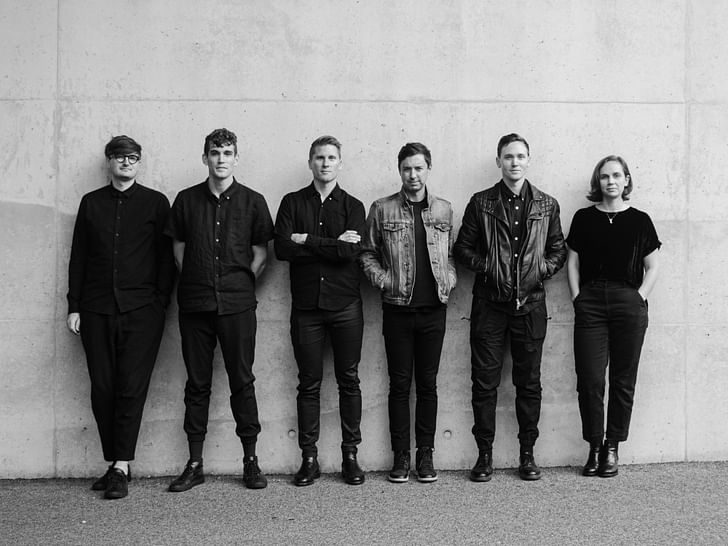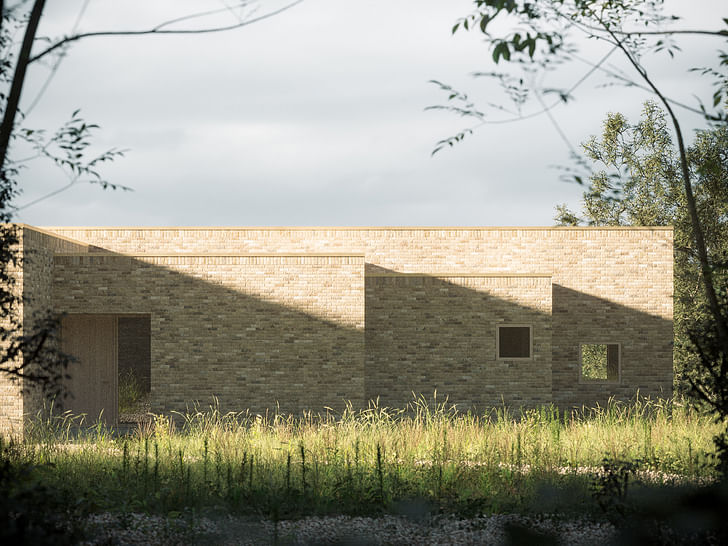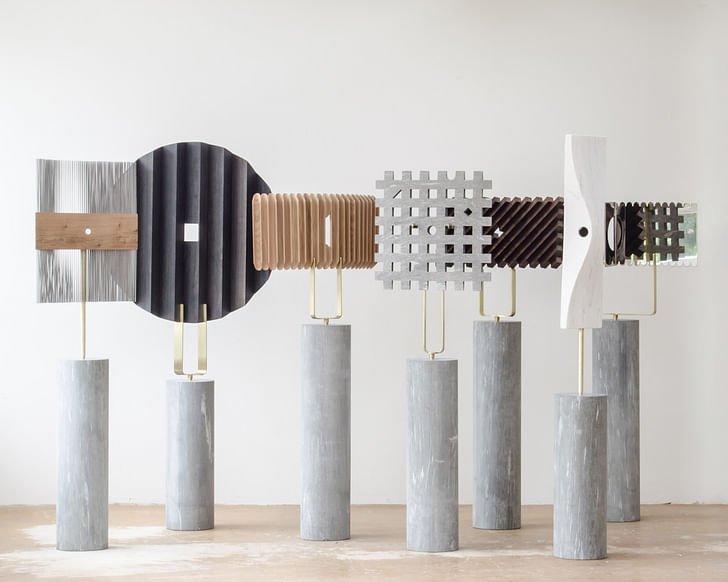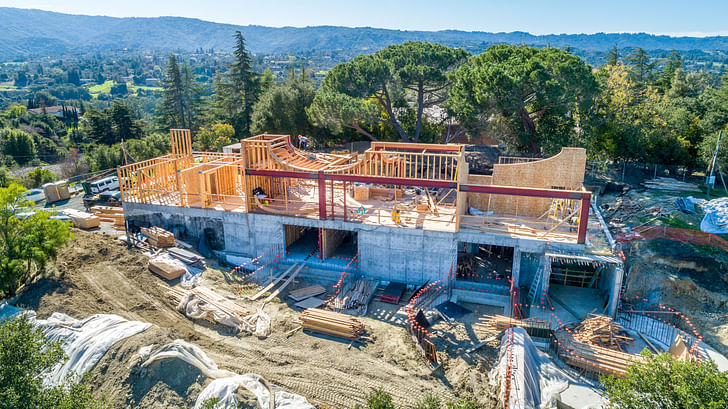

WOJR: Organization for Architecture is a six-person "organization of designers" based in Cambridge, Massachusetts led by William O'Brien, Jr. that works holistically across projects, research, and workflows to conceptualize the practice of architecture as "a form of cultural production." O'Brien, a tenured Associate Professor at the MIT Department of Architecture and one of the founding members of Collective–LOK, and his team work to imbue a growing set of conceptual and built projects with an immaculate sense of detail that fuses subtle formal gestures with elemental materiality to produce sumptuous spaces that toy with our expectations of what architecture should be.
For the latest Studio Snapshot, Archinect connected with O'Brien to discuss the intellectual and cultural concepts that drive the practice and its work.
Where and when did your studio start?
I started to make independent work when I began my first fellowship at Berkeley in 2005, but WOJR, the office, really began in earnest in 2013 when we found an office space in Cambridge and hired our first full-time employees, John David Todd and Gabrielle Patawaran.
How many people work at the company?
We currently are five, sometimes six or seven when we have interns with us.

Why did you decide to start your own office?
The notion of creative autonomy was always pretty alluring to me. Coming from an academic context, starting an office was initially a way to expand the pedagogical framework being developed through my teaching. I wanted to make a venue to create and explore concepts in a real-world context—to stitch together the academy and the profession. As we’ve grown, WOJR is now a collective of great thinkers and talented designers, all engaged in practice, some affiliated with academia, and in a continual conversation about what architecture is.
Coming from an academic context, starting an office was initially a way to expand the pedagogical framework being developed through my teaching.
What are other offices that you look at for guidance and why?
We are constantly “reading” works of architecture and cultural production as we think about our own work. Some work is completely contemporary; a lot is in the past. It is interesting to trace currents of thought across projects and over time and see what really sticks. As of late, we’ve been meditating a lot on the work of Smiljan Radic. And we often find ourselves coming back to Kazuo Shinohara, to John Hejduk. But, just the other day our conversation about a project revolved around sculptures by Bernini and Louise Nevelson, and a moment from The Mirror by Andrei Tarkovsky. We tend to pull from all kinds of references all at the same time, but, overall, we find recurring themes hovering between platonic rationalism—an architecture out of constraints, ordering systems, and rules—and the compositional, poetic, and idiosyncratic gesture. We are really drawn to works that haunt us, works that linger in our minds and reveal themselves over time.

What would you want your firm to be known for?
There are really two ways of answering this.
The first is about the work itself. We hope that our work is recognized for its quality and precision. We care a lot about the built reality of an object, of the temper of a space. We equally care deeply about the representational artifacts that lead toward that built end. For us, an exactness of their making allows us to take ownership of every line, and in turn, every seam, every texture, every detail, every moment. We always want to challenge ourselves and our assumptions about architecture. We hope that the work we make keeps constantly evolving and eschews easy categorization.
The second is in the culture of our office. Our office is a “project” as much as any of our projects. We want the way we organize ourselves and develop work together to be as thoughtful and quietly radical as the work itself.

What have been the biggest obstacles along the way?
The growth of our office is a constant path toward legitimacy. We always have aspirations that extend beyond what is possible at any particular moment. Really, what it ultimately requires is a lot of patience. Patience to stay the course and have faith in your abilities. And patience to find the right people. Both for clients who share in our vision and are willing to go down the rabbit hole to make something new and yet unknown together, and ever more so for finding the right people to be a part of our team.
What are you currently working on?
Shoes, some towers, columns, and a few curious houses.
We tend to pull from all kinds of references all at the same time, but, overall, we find recurring themes hovering between platonic rationalism—an architecture out of constraints, ordering systems, and rules—and the compositional, poetic, and idiosyncratic gesture.

What other avenues of creative exploration does your office pursue?
We try to notice when the same elements or themes recur in conversations about multiple projects. When we keep returning to a question about, say, how a wall or column gets instrumentalized, we recognize the seed of a deeper exploration. We seek out and value the opportunity to create objects—like Totems, Morris Column, and Other Masks—that are not commissioned buildings. These explorations offer time and space for us to pay closer attention to the things that affect and delight us. For example, "Other Masks," a series of sculptural objects, allowed us to look closely at the facade, the face, the mask. When working through subsequent building projects, having rehearsed their form on a smaller scale, we find that we can design those elements with more confidence and precision.
What are the benefits of having your own practice? And staying small?
Happiness.
We want the way we organize ourselves and develop work together to be as thoughtful and quietly radical as the work itself.
What makes practicing architecture in Boston / Cambridge unique?
Our practice could probably be elsewhere if it wasn’t for being here. Another way to say it: we are simultaneously, integrally tied to this place and apart from it. Physically, our office is right in the middle of Cambridge, halfway between MIT and Harvard. We are definitely a part of both of those communities in various ways; I’ve been at MIT for a decade, and many of us at the office are affiliated with the GSD. At the same time, our office is its own place that has its own conversations. Sometimes the themes of our conversations mirror those being had immediately around us, but, just as often, we are in dialogue with works and conversations happening elsewhere and of other times. This is also reflective in the work we make. Despite being based in Cambridge, we’ve only had one project locally, the Aesop Store in Back Bay. A lot of our work is all over the map. Currently we have projects on Block Island, in NYC and Upstate, Western Mass., the Bay Area, London, and Venice.

What is the main thesis of your office and has it changed over time?
A few years ago we would have answered with what we were not. We were a part of the post-digital generation reacting against the formalisms and ideologies dominating discourse at the time. We sought to make new from the known, rather than from the alien… to defamiliarize a thing that exists rather than impose a new language altogether. But now, I think our center of gravity has shifted a bit. Rather, more layers have been added to our project. Confronting the act of building in all of its complexities and realities—its weight, its precision (and imprecision), the craft of every trade—has been invigorating as it has been humbling.
Through all of this, though, what we find ourselves returning to is: “that which is unique about a thing itself.” This is something we say a lot in the office. It becomes the lens through which all decisions get made. We aspire to make decisions about a project based on what makes a condition unique. This encourages us to always be expanding our comfort zone regarding the qualities of form. We love the idea that each project is an opportunity to conjure a new utterance… something that we didn’t know we could or would make before confronting what is unique about the new project.
Up until a few weeks ago, the world was moving forward with aspirations for outward growth. Right now, we are looking to endure everything and come out improved. It’s a time to focus ourselves around our intellectual project and the culture of the office.

Where do you see the office in 5 years? In 10 years?
This is an interesting time to be asked this with all the uncertainty of the immediate future. Up until a few weeks ago, the world was moving forward with aspirations for outward growth. Right now, we are looking to endure everything and come out improved. It’s a time to focus ourselves around our intellectual project and the culture of the office. We are taking this as a reminder to reflect on all our projects together and let the conversations about the work simmer. It’s an embrace of slowness and the luxury of having time to consider with even more intentionality. We always aspire to be more deliberate about the work we make and the way we make it.
How do you look for talent for your office?
Of course, we care deeply about hiring talented designers, but just as important for us is temperament. When we are in talks with a candidate, we try to make sure everyone on our team has the opportunity to have a conversation with them about their work, about our work, about design generally. It sounds almost silly to say, but we are looking for good human beings—humble, balanced, and optimistic even as they are dedicated and passionate about design. WOJR is the project of the office as much as the projects we produce. In order for us to produce the meaningful culture of shared design exploration we strive for, the right people become ever more imperative. Up until this point, we’ve had a mix of luck and lots of patience to find the right people. As we continue to grow from an office of one, to two, to five now, and beyond, it will be ever more important to stay patient and manage our growth intentionally.

It sounds almost silly to say, but we are looking for good human beings—humble, balanced, and optimistic even as they are dedicated and passionate about design.

Can you explain your involvement with Collective-LOK?
It’s an intellectual and creative fling with good friends. We have a deep respect for the work of Jon and Michael, and it is always a fun and stimulating time to work together. We’re all busy with so many other things, so we haven't been able to make it a priority lately, but we certainly look forward to the next opportunity to work on something together. Working as a Collective does wonders in both challenging and substantiating the values that we adhere to when we practice as WOJR. I am so grateful for that.
Antonio is a Los Angeles-based writer, designer, and preservationist. He completed the M.Arch I and Master of Preservation Studies programs at Tulane University in 2014, and earned a Bachelor of Arts in Architecture from Washington University in St. Louis in 2010. Antonio has written extensively ...
4 Comments
thank you for the excellent and inspiring post.
great work, what planet are they from or are they from the future , in regards to the photo
planet GSD. black doc martins, black everlane, black uniqulo u, mix with some rick owens.
i approve of this work
Block this user
Are you sure you want to block this user and hide all related comments throughout the site?
Archinect
This is your first comment on Archinect. Your comment will be visible once approved.